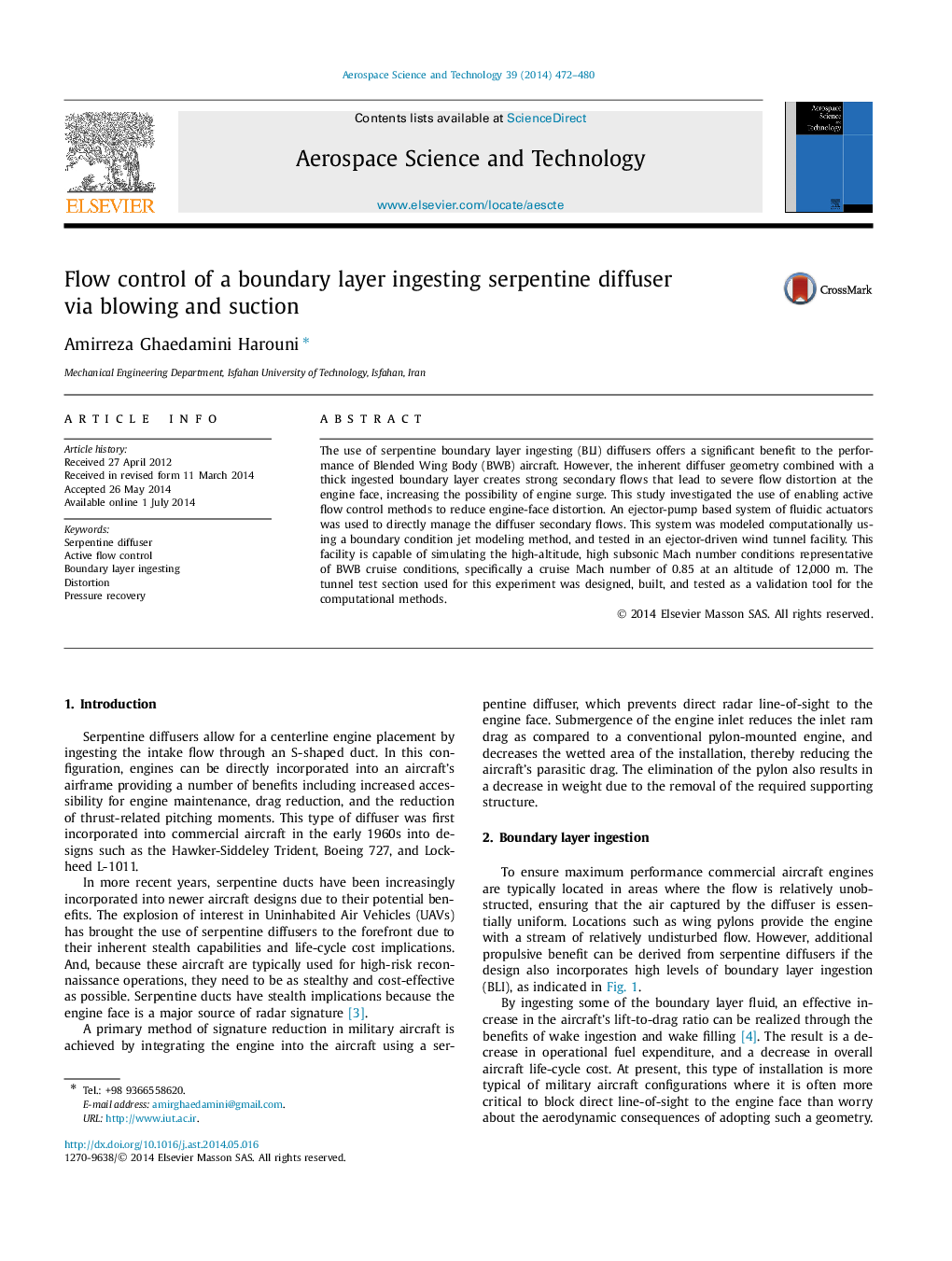| Article ID | Journal | Published Year | Pages | File Type |
|---|---|---|---|---|
| 1717999 | Aerospace Science and Technology | 2014 | 9 Pages |
The use of serpentine boundary layer ingesting (BLI) diffusers offers a significant benefit to the performance of Blended Wing Body (BWB) aircraft. However, the inherent diffuser geometry combined with a thick ingested boundary layer creates strong secondary flows that lead to severe flow distortion at the engine face, increasing the possibility of engine surge. This study investigated the use of enabling active flow control methods to reduce engine-face distortion. An ejector-pump based system of fluidic actuators was used to directly manage the diffuser secondary flows. This system was modeled computationally using a boundary condition jet modeling method, and tested in an ejector-driven wind tunnel facility. This facility is capable of simulating the high-altitude, high subsonic Mach number conditions representative of BWB cruise conditions, specifically a cruise Mach number of 0.85 at an altitude of 12,000 m. The tunnel test section used for this experiment was designed, built, and tested as a validation tool for the computational methods.
